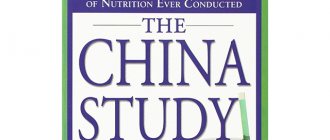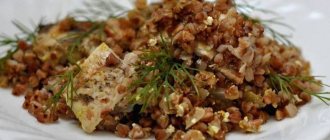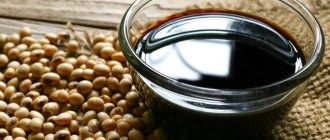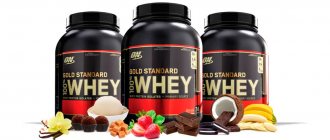Calorie content and chemical composition, BJU
There are more than 30 types of legume products in nature, and each of them has a unique elemental content.
Due to their rich protein content, beans are often used as meat substitutes.
They consist of vegetable proteins (40%), carbohydrates (50-55%), and are rich in vitamins A, B, B, C, as well as phosphorus, iron and magnesium.
Energy value and BJU of the most popular types:
| Kinds | Squirrels | Fats | Carbohydrates | Calorie content in kcal per 100 g. |
| Green beans | 6,1 | 0,2 | 10 | 62 |
| Green beans | 3,2 | 0,3 | 13,7 | 30 |
| Soybeans | 34, 8 | 17,1 | 26,3 | 331 |
| Green peas | 5,2 | 0,2 | 13,6 | 71 |
| Beans | 22 | 2,1 | 55 | 292 |
| Dry peas | 20,1 | 2,1 | 54,3 | 298 |
| Peas | 23 | 1,5 | 56,7 | 323 |
| Lentils | 24 | 1 | 54,7 | 283 |
The role of proteins
The value of beans of any type lies in their high content of proteins and amino acids.
Protein is a valuable enzyme for building and strengthening muscle mass, immunity, and growth.
Note! Due to their rich protein content, beans often act as meat substitutes.
To maintain balance, it is necessary to consume foods with both animal and plant protein in equal proportions.
The role of vitamins and minerals
Also, eating beans allows you to compensate for the lack of iron, phosphorus, magnesium, carotene, potassium, calcium and sulfur.
Any type of beans contains vitamins of groups A, B1, B2, C, as well as a rare vitamin PP (nicotinic acid), which are actively involved in the development and maintaining the vital functions of the body.
Also, eating beans allows you to compensate for the lack of iron, phosphorus, magnesium, carotene, potassium, calcium and sulfur, which makes them an integral part of the diet.
Molybdenum, which is part of the composition, is involved in the fermentation process and neutralizes harmful preservatives, normalizes sugar levels.
List of legumes, their characteristics, calorie content, BJU per 100 grams
Legumes include not only the familiar peas and beans. Their list is quite large, each legume is useful in its own way, they differ in calorie content and nutritional value:
Soybeans
- Calories, kcal: 381;
- Proteins, g: 34;
- Fats, gr: 17;
- Carbohydrates, gr: 17.
This cultivated plant is famous for its rich protein content. It is often eaten by vegetarians. It is used to make tofu cheese and soy sauce. It prevents the development of osteoporosis and increases the number of bifidobacteria in the intestines. It is also a source of calcium, which in turn is responsible for bone strength.
Contains:
- folic acid;
- biotin;
- protein;
- B vitamins.
Beans
- Calorie content: kcal 298;
- Proteins, gr: 21;
- Fats, gr: 2;
- Carbohydrates, gr: 47.
A nutritious and easily digestible product, it is not consumed raw, but has many cooking options. Well regulates the salt balance in the body, as well as metabolic processes.
Contains:
- folic acid;
- zinc;
- copper;
- phosphorus;
- fiber.
Lentils
- Calorie content: kcal 295;
- Proteins, g: 24.8;
- Fats, gr: 1.5;
- Carbohydrates, gr: 46.
It has healing properties and also helps with weight loss. Moreover, it is recommended for diabetes. It can also be used by women during menopause. Regular consumption of lentils improves skin condition. It is consumed in its pure form and processed; it makes delicious soups.
Contains:
- protein;
- iron;
- copper;
- potassium;
- phosphorus.
Beans
- 58.9 kcal;
- 6 gr. squirrel;
- 0.1 gr. fat;
- 8.5 gr. carbohydrates.
Such beans reduce appetite, stimulate intestinal function, and are useful for pregnant women. Rich in protein, which in turn can be a good substitute for meat. With regular consumption of beans, you can get silky and smooth hair. This is because beans contain manganese.
Contain:
- B vitamins;
- sodium;
- potassium;
- iron.
Vika
- Calorie content, kcal 57;
- Proteins, gr: 6;
- Fats, gr: 0.1;
- Carbohydrates, gr: 8.5.
These legumes are used as fertilizer, soil amendment, and also as animal feed. Rich in nitrogen.
Sainfoin
- Calorie content, kcal 9;
- Proteins, g: 0.6;
- Carbohydrates, gr: 1.7;
- Fats, gr: 0.5.
This plant is used as a medicine; it improves immunity, controls the production of male hormones, and has an anti-inflammatory effect. It is honey-bearing.
Chickpeas
- Calorie content, kcal 304;
- Proteins, gr: 20;
- Fats, gr: 4.3;
- Carbohydrates, gr: 46.
Quite a nutritious product, often used in cooking and pharmacology.
Contains:
- B vitamins;
- magnesium;
- zinc;
- phosphorus;
Peas
- Calorie content, kcal 298;
- Proteins, gr: 23;
- Fats, gr: 1.5;
- Carbohydrates, gr: 53.
It is considered one of the healthiest types of legumes. It is rich in vitamins K, C, B. Increases immunity and improves blood clotting. Helps get rid of extra pounds.
Contains:
- B vitamins;
- vitamin C;
- zinc;
- copper;
- potassium.
Lupine
- Calorie content, kcal 371;
- Proteins, g: 36.1;
- Fats, gr: 9.7;
- Carbohydrates, gr: 21.4.
It is actively used in medicine and pharmacology. Lupine beans are known to have anti-inflammatory and antimicrobial effects. It stimulates the intestines and heart function well. Lowers blood sugar levels. Lupine oil is used in cosmetology. Increases immunity.
Contains:
- calcium;
- zinc;
- copper;
- iron;
- vitamin B.
Alfalfa
- Calorie content, kcal 23;
- Proteins, g: 0.2;
- Fats, gr: 0.7;
- Carbohydrates, gr: 4.
The seeds are a source of protein, amino acids and protein. Strengthens bones, improves blood circulation. Increases immunity.
Contains:
- fiber;
- calcium;
- copper;
- manganese.
Peanut
- Calorie content, kcal 550;
- Proteins, g: 26.3;
- Fats, gr: 45.2;
- Carbohydrates, gr: 9.7.
It is considered a high-calorie and quite filling product. Rich in vegetable fat, potassium and manganese.
Contains:
- phosphorus;
- magnesium;
- vitamin E.
Benefits for the body
When they enter the body, the beneficial substances in beans perform the following important functions:
- participation in the breakdown of fats;
- acceleration of metabolism;
- normalization of glucose levels;
- cleansing the intestines of toxins and free radicals;
- neutralization of harmful preservatives.
Thus, adding a bean side dish to your diet allows you to saturate the body with all vital microelements.
Oncological diseases
Legume seeds have a unique property - slowing down the growth of tumors. Seeds in pods have this ability; adzuki beans are especially effective against cancer.
Note! The content of microelements in beans decreases during heat treatment. To preserve the vitamin composition, it is recommended to avoid prolonged frying and use of a pressure cooker.
The presence of legumes in the diet reduces the risk of developing cancer of the digestive tract, kidneys, ovaries, and bladder.
Benefits for the gastrointestinal tract
Due to their high content of valuable minerals and low calorie content, beans are considered one of the healthiest dietary foods.
Thanks to molybdenum, beans help break down the preservatives added to most other foods.
They also have an anti-inflammatory and astringent effect, due to which they fight inflammation of the kidneys, liver and gastrointestinal problems.
Doctors recommend using beans to obtain a natural diuretic and laxative effect for diarrhea.
Benefits for the blood and heart
A special feature of legume products is their effect on reducing glucose and purifying the blood . Regular consumption of beans is recommended for diabetics as they help lower cholesterol.
Folic acid and potassium stimulate an increase in natural defenses and also have a beneficial effect on the functioning of the cardiovascular system.
By including beans in your menu, you can strengthen your heart muscle and prevent the development of cardiac diseases.
Dietary product
Due to their high content of valuable minerals and low calorie content, beans are considered one of the healthiest dietary foods.
They help quickly satisfy hunger and ensure a feeling of fullness for a long time, and the fiber they contain speeds up metabolism, cleanses the body and allows you to break down fats faster.
Therefore, this category of products is recommended for consumption by people trying to lose excess weight.
The benefits of sprouted fruits
The main advantage of eating sprouted bean seeds is that in this form the beans contain twice as many vitamins and minerals.
When green peas and beans are sprouted, the amount of vitamins B and E increases several times, and vitamin C and phosphorus are added.
The main advantage of eating sprouted bean seeds is that in this form the beans contain twice as many vitamins and minerals
Regular consumption of sprouted grains of legumes in the diet can effectively cleanse and rejuvenate the body , stimulate the production of hemoglobin, lower blood pressure and improve the body's immune defense.
What are the most popular legumes?
Peas
Peas do not lose their popularity and are not losing ground. Peas have been known since ancient times and have always been valued as a highly nutritious product. Peas are a substrate for many dishes, however, they are mainly used for preparing rich soups, as well as pea porridge. Spices, salt, pepper, as well as oils, both butter and vegetable, are added to the peas.
The main methods of cooking peas are boiling and stewing. Heat treatment allows the peas to soften, and accordingly, the nutrients and beneficial substances that they contain (this applies more to protein) become available for absorption. Of course, thermally unstable vitamins, such as vitamin C (ascorbic acid), will be destroyed when heated. However, B vitamins are stable when treated with heat.
There is an option to use not dried peas, and then boiled or stewed, but fresh green peas, which from a nutritional point of view belongs more to the group of vegetables. In this case, vitamin C will be most accessible. If the dish is prepared from dry peas, then it can be considered from the point of view of a source of vegetable protein, heat-stable vitamins and minerals. In order to speed up the cooking of peas, they should be pre-soaked in water.
The calorie content of peas is 298 kilocalories per 100 grams. The calorie content of green peas is 81 kilocalories per 100 grams.
Beans
Beans are close in popularity to peas. Beans were known even before our era in South America, and then spread throughout the world. There are many varieties of beans - white, red, black and others, as well as green string beans (which are the unripe fruits of common beans). Green beans have much lower calorie content than other types of beans (23 kilocalories per 100 grams).
The calorie content of dry beans is 265 kilocalories per 100 grams. The calorie content of boiled beans is 123 kilocalories per 100 grams.
Kidney beans are rich in protein and also contain essential amino acids. In addition, the presence of B vitamins, vitamin C and beta-carotene, as well as potassium, zinc, phosphorus and magnesium, plays in favor of beans. Beans need to be heat treated, since many varieties of beans contain toxic substances that are destroyed precisely during heat treatment.
Chickpeas
Chickpeas (Turkish or lamb peas) have been known since ancient times; they are similar to the peas we are used to, but their beans are larger and denser. Chickpeas are very common and popular in Middle Eastern cuisine. Chickpeas are used to make dishes such as hummus and falafel, as well as to produce chickpea flour. Desserts are even made from chickpeas (in Philippine cuisine). Interestingly, chickpeas require longer heat treatment than their family members - beans, peas and lentils. To reduce cooking time, you can also use pre-soaking in water. Chickpeas are very rich in protein (twenty to thirty grams per 100 grams of beans). Among the amino acids, we can say that chickpeas contain the essential acid lysine, which is not formed in our body and requires mandatory intake from food. There is also fat in chickpeas, but it is relatively small - up to 7 grams. Chickpeas can be considered a good source of B vitamins, as well as minerals - zinc, potassium, magnesium and phosphorus. Due to its fiber content, chickpeas have a beneficial effect on cholesterol levels in the body, eliminating excesses. Chickpeas are very popular among vegetarians and are good during religious fasts.
The calorie content of dried chickpeas is 364 kilocalories per 100 grams. The calorie content of boiled chickpeas is 127 kilocalories per 100 grams.
Mash
Mung beans (mung beans, Asian beans, golden beans) are popular, like many legumes, in the cuisine of Asian countries. These are China, India, Japan, Turkmenistan and Tajikistan. Mung bean is eaten boiled, in the form of a kind of porridge, paste (dal), and used in the preparation of soups, with or without the addition of meat. In addition, starch from mung beans is used in the production of Chinese noodles - funchose. Mung bean can also be eaten sprouted. You can also make salads, desserts, drinks, ice cream and jelly from mung bean. Mash takes about forty minutes to prepare and does not require pre-soaking. Mung bean is rich in protein and carbohydrates, and contains only two grams of fat per 100 grams.
The calorie content of dry mung bean is 347 kilocalories per 100 grams. The calorie content of cooked mung bean is 107 kilocalories per 100 grams.
Lentils
Lentils are not as popular as peas or even beans. However, it has no less benefits and no less rich taste than its legume counterparts. Lentils are very common in the cuisine of Asian countries and are almost one of the staple foods due to their nutritional value and versatility. There are several varieties of lentils. It can be green, brown, red. Red is slightly higher in calories (318 kilocalories per 100 grams) than brown and green (297 kilocalories per 100 grams). The calorie content of boiled lentils is 112 kilocalories per 100 grams. All varieties of lentils are rich in vegetable protein, so in some cases it can replace dishes made from animal protein (for example, meat). At the same time, the fat content in lentils is less than one gram per 100 grams. In addition, about half are carbohydrates, mostly complex. Lentils can be called a good source of minerals - potassium, phosphorus, as well as calcium and iron. Lentils have a good content of B vitamins, and their red variety contains beta-carotene.
Peanut
Peanuts are also legumes. But it is more common to classify it as a nut, and its calorie content is close to them - about 560 kilocalories.
Contraindications
Frequent consumption of beans is not recommended for people with sensitive intestines and stomach diseases, as this can lead to microflora irritation, gas formation and bloating.
The purine substances they contain aggravate the symptoms of nephritis and gout, so eating beans is strictly prohibited for these diseases.
Other contraindications to eating beans include: flatulence, constipation, diseases of the gallbladder, pancreas. Elderly people and children should also consume beans with caution.
Cooking recipes
Among the most popular cooking methods are: steaming, casseroles, soups, vegetable salads, stewing in oil, stews and others.
In addition, flour is prepared from legumes, which is added when baking baked goods to increase their benefits and nutritional value.
Beans for weight loss
Beans are a nutritious, low-calorie food that is ideal for weight loss.
Beans contain a minimum of vegetable fat and carbohydrates, but a lot of fiber, which has a beneficial effect on the body of a person losing weight.
Vegetarian salsa
Adding different types of legume products from the list to your food will allow you to quickly satisfy your hunger, a feeling of comfort and satiety for a long time, which significantly reduces the amount of food consumed.
Beans speed up metabolism, which allows you to digest food and break down fats faster.
List of legume products:
- beans;
- peas;
- chickpeas;
- lentils;
- peanut;
- soy;
- lupine;
- tamarind.
Vegetarian salsa
A popular dietary and vegetarian dish with beans is vegetarian salsa - a cold Mexican soup made from several types of beans, cilantro, corn, red peppers, onions and tomatoes with spices.
Ingredients:
- corn grains – 1 cup;
- red sweet pepper – 1 pc.;
- canned beans – 100 g;
- green peas – 80 g;
- onion – 1 pc.;
- green onion – 2 pods;
- green pepper – 1 pc.;
- tomato – 4 pcs.;
- tomato juice – half a glass;
- cilantro – 15 g;
- chili powder – 10 g.
The traditional recipe involves the following preparation steps:
- Pour boiled water over the tomatoes, peel them and chop them.
- Chop a few green onions and cilantro.
- Place the pan on the fire, add olive oil and all ingredients.
- Fry vegetables in oil, sprinkle hot pepper powder on top, add water and cook for 5-10 minutes.
- Remove the pan from the heat, add beans, green peas, and add tomato juice.
- Transfer contents to a tureen and serve cold.
Refried beans
Fried beans
Fried beans are considered a delicious dish and a dietary food category. You can prepare this dish using various legume products from the list, but beans are the best.
The following ingredients will be required:
- dried beans – 150 g;
- soda – 1 tsp;
- sunflower oil – 2 tbsp. l.;
- sea salt – 1 tsp.
Preparation includes the following steps:
- The beans must be soaked in cold water for 16 hours, add 1 tsp. soda
- Remove the beans from the water, dry them, and cut them on the sides.
- Heat a frying pan with vegetable oil, add the fruits, fry until golden brown.
- Sprinkle with sea salt and place on a plate.
- Serve with fresh herbs.
Lentil sweets
In addition to traditional dietary dishes, you can also prepare unusual treats – sweets – from beans.
To prepare low-calorie and healthy sweets, any type from the list of legume products is used, but most often lentils, nuts and dried fruits are used as the basis.
For cooking you will need:
- red lentils – 140 g;
- dates – 10 pcs.;
- dried apricots – 80 g;
- raisins – 50 g;
- chopped walnuts – 110 g;
- cocoa powder – 4 tbsp. l.;
- sugar powder – 40 g.
Lentil candies
Recipe for making delicious dietary lentil candies:
- Boil a glass of red lentils and let cool.
- Take 100 g of dried apricots, 10 dates, 50 g of raisins and walnuts, add everything to a blender and grind.
- Add lentils to the blender and grind again.
- Add 1 tbsp to the resulting mixture. l. cocoa and powdered sugar and mix.
- Place in the refrigerator for a couple of hours.
- Form balls of equal size and roll in powdered sugar.
How to cook and eat?
Legumes can be added to any dish, for breakfast, lunch or dinner.
Once cooked, they are eaten hot or cold, and some types of legumes are easy to eat raw. To make your meals tasty and healthy, add boiled or canned beans to dressings and sauces, soups, salads, sandwiches, pasta and any other side dishes. Dried beans and lentils, which are so widely used in Asian countries, were specially studied by scientists from Japan and China. It turned out that the beneficial substances from these dry food products are not lost even after long-term storage. Some people are bothered by excessive gas formation when eating legumes. We just wrote an article about how to get rid of bloating. And, in order to avoid unpleasant consequences caused specifically by this food, always soak dried beans for several hours, and also add them to your diet systematically, but little by little. This will give the body the opportunity to get used to specific food and digest it correctly. Chew any solid food well, until it turns into “mush.” By combining beans with spices like ginger and curry, you can completely avoid flatulence. If you don't know how to cook delicious beans or where to start, use our simple recipe.
Bean dish recipe
The following ingredients will be required:
- 150 g red beans;
- half an onion;
- a pair of garlic cloves;
- 2 tbsp. tablespoons of natural, unrefined vegetable oil;
- half a teaspoon of ground cumin and the same amount of salt;
- a quarter teaspoon of dried oregano.
It's simple:
Soak the beans in water for at least 5 hours if they are dried. If the beans are fresh, mash them thoroughly with a fork or puree them in a blender. Chop the onion and garlic. Heat the oil in a suitable container over medium heat, add the onion and fry for 1 - 2 minutes. Next, mix the garlic and cumin, add to the onion and heat for 30 seconds. Add bean puree and a few tablespoons of water to the mixture (depending on how much juice was in them initially). When the beans boil, reduce the heat to low and add salt and oregano. Simmer for 10 minutes, uncovered.
Summarize
Everything that belongs to legumes is not only rich in vital substances, but also helps:
- Lower cholesterol;
- Regulate glucose levels for patients with diabetes;
- Prevent cancer;
- Reduce blood pressure;
- Improve colon function;
- Treat constipation and other digestive problems.
Women who regularly consume beans are less likely to develop breast cancer compared to others. Some varieties, such as soybeans, are rich in anti-inflammatory compounds called saponins. However, it should be remembered that excessive heat treatment destroys some of the beneficial compounds. Certain people are allergic to various types of legumes. Therefore, before consuming prepared foods from supermarkets, you should carefully read all labels. In addition to legume products, we know drinks made from them, such as milk from plant products (soy, almond), their consumption also helps to obtain all the beneficial substances of legumes.
What plants are legumes?
In addition to traditional beans and peas, the list of legumes includes many more plants with special properties for the human and animal body.
Legume fruits differ in value and energy composition, size, color and method of germination.
Among the most common plants in the list of legume products, it is worth highlighting:
- sweet clover;
- Vika;
- chickpeas;
- feed peas and beans;
- lupine;
- sainfoin;
- Red clover;
- peanut.
This category includes both food and ornamental plants, trees and shrubs, which have been used for many years for feeding livestock, eating and for decorative purposes.
The use of legume products for weight loss
Legumes are considered high-calorie foods and are best for weight loss. After all, thanks to legumes, the body is cleansed of waste and toxins, which means swelling goes away, which leads to slow weight loss.
Also, eating legumes improves complexion, skin and hair condition. Thanks to them, metabolism and digestion are improved and blood sugar and cholesterol levels are stabilized. They also improve brain activity and normalize the emotional background, so a person is less exposed to stress and depression, which means he has fewer problems.
Peanuts, chickpeas, beans and other legumes are very healthy because they are rich in fiber, protein, B vitamins, iron and magnesium. They have a beneficial effect on the functioning of the cardiovascular and digestive systems, regulate blood sugar levels, improve the functioning of the nervous system and brain function.
All types of legumes can be found on the shelves of shops and supermarkets, making them affordable. Each type has an individual composition, rich in vitamins and macroelements. There are a number of contraindications when taking legumes, but if you take them into account, then eating beans and chickpeas will only be beneficial.











